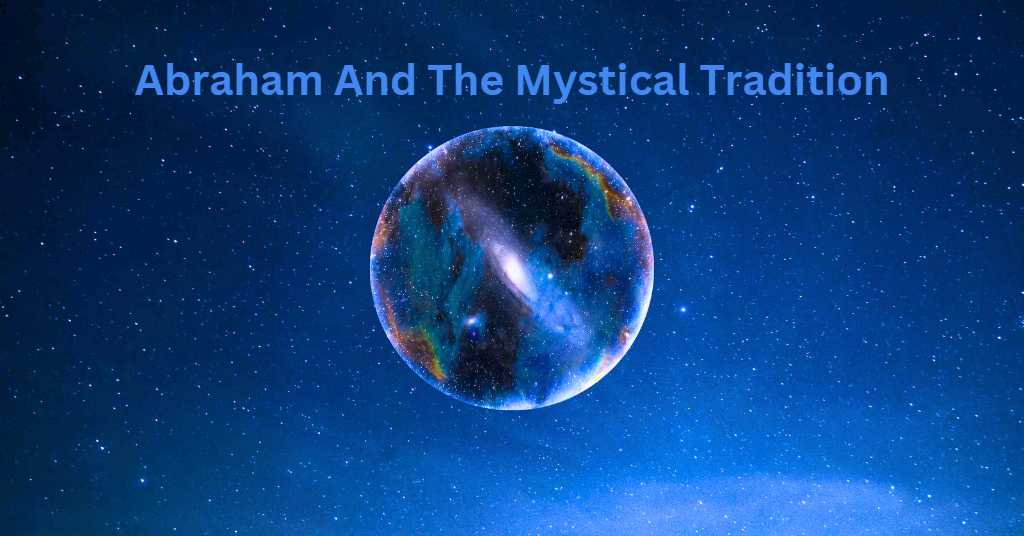Abraham and the Mystical Tradition
When Moses received the Torah at Sinai he received initially the Ten Commandments and during the forty years in the desert he recorded the complete written Torah as revealed to him by God. Along with the written Torah he also received the oral tradition that explains the meaning of the written text. In fact, without the oral Torah the written Torah would be in many cases incompressible and even worse could be understood in ways never intended. An important part of the oral tradition included a mystic understanding of the Torah handed down through what is now referred to as Kabbalah to this very day.
Rashi explains why it is so important to know the deeper meanings behind the laws in his commentary on the following words: “And these are the ordinances that you shall place before them” (Exodus 21:1). The Midrash’s commentary on this verse, cited by Rashi, addresses the phrase “that you shall place before them”:
God said to Moses: “Do not think that [it will be sufficient for] you to teach them the laws two or three times until they have memorized them and then you will not have to bother to explain the deeper reasons and explanations to them. This is why it is written, ‘you shall place before them’—like a set table before a person, fully ready for dining.”
In other words, it was not enough for Moses to teach the Jewish people what to do without explaining the deeper reasons and ideas contained in the Torah’s laws.
Similar to the statement by the Sages described above that Abraham and the other Patriarchs and Matriarchs observed the Torah through Divine Inspiration and deep intuition even before it was “officially” given at Sinai, so too, much of the mystic tradition that Moses received was already known, taught and practiced by the founders of the Jewish people, especially by Abraham. These teachings have had a profound affect on Judaism to our very day and also influenced to a great degree mystic trends in Christianity and Islam. In fact, a whole school within Medieval Christianity was called Christian Kabbalah which of course was based on Jewish mystical teachings.
Sefer Yetzirah
Sefer Yetzirah is considered the oldest text of Kabbalah. Although it was handed down by oral tradition and edited much later, the wisdom in this precious book is considered to come from Abraham. Although there are a number of versions of the text, many consider that it was Rebbe Akiva in the first century CE who compiled and edited the basis of what we call Sefer Yetzirah today. The basis for connecting the wisdom in this text to Abraham is based on the last statement in the book (6:7) that we quote here in full:
“And when Abraham our father, may he rest in peace looked, saw, understood, probed, engraved and carved, he was successful in creation, as it is written “And the souls that they made in Haran (Genesis 12:5). Immediately there was revealed to him the Master of all, may His name be blessed forever. He placed him in his bosom and kissed him on his head, and he called him “Abraham my beloved” (Isaiah 41:8). He made a covenant with him and with his children after him forever, as it is written, “And he believed in God and He considered it righteousness” (Genesis 15:6). He made with him a covenant between the 10 fingers of his hands – this is the covenant of the tongue, and between the ten toes of his feet – this is the covenant of circumcision. And He bound the 22 letters of the Torah to his tongue and He revealed to him His mystery. He drew them in water, He flamed them with fire, He agitated them with breath, He burned them with the seven planets, He directed them with the 12 constellations.”
The verbs used in this description – “probed, engraved and carved” are code words connected to the mystical art of permuting Hebrew letters which are considered the building blocks of creation. Similar to how God creates the world through speech and the Hebrew letters, we build our worlds of thought, speech and action through language. The main subjects of Sefer Yetzirah are in fact the ten sefirot and the 22 Hebrew letters and how they manifest at every level of reality.
Another classical Kabbalistic work, highly influenced by Sefer Yetzirah, the Tikkunei Zohar is attributed to Rabbi Shimon bar Yochai, a student of Rebbe Akiva. It uses this method extensively, permuting the six letters of the Torah’s first word “bereishit” ( בראשית ). The entire book consists of seventy interpretations devoted to explaining these permutations. In the course of these interpretations, profound light is shed on the where, why, when, and how of creation.
As we have mentioned a number of times, Abraham was famous in his own generation as a leading spiritual figure and a mystic. Therefore, we should not be surprised that the oldest text of Kabbalah is attributed to him.







